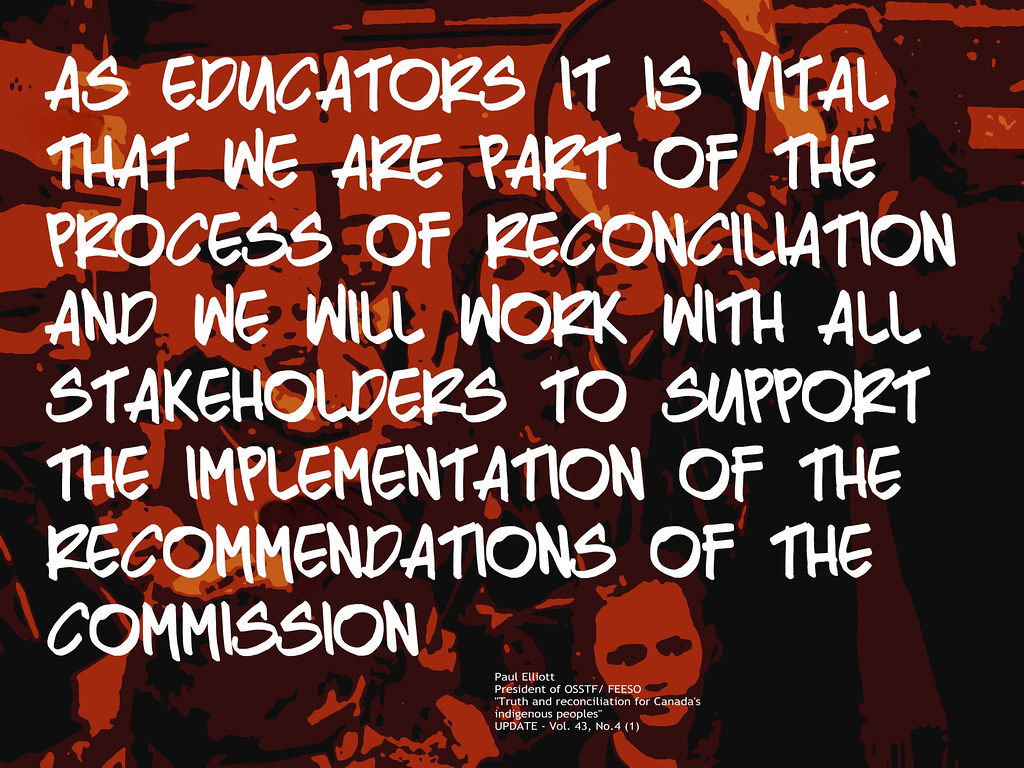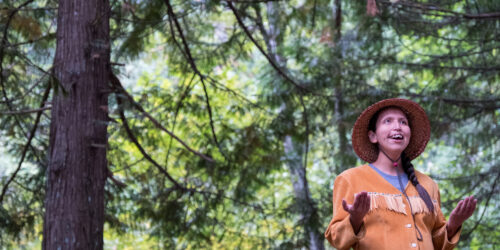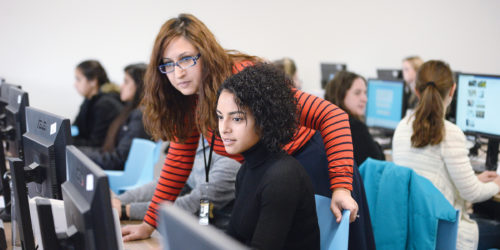
Building Truth and Reconciliation for Indigenous Peoples into Teaching
By Elan Paulson and Sara Kafashan
Note: This post has been written from the perspective of two settlers in North America, incorporating research and voices from Indigenous Peoples. This post focuses on how faculty can reflect upon and respond to the Calls to Action as part of the Truth and Reconciliation Commission of Canada. We acknowledge that this is an iterative process, and offer this post as a starting point for faculty to reflect on the TRC in relation to their teaching practice. This is the first of multiple posts that will expand on the main ideas described below, so please check back for further posts on this topic.
Truth and Reconciliation for Indigenous Peoples
The Truth and Reconciliation Commission of Canada (TRC) emphasizes deepening Canadians’ understanding of the history of Indigenous Peoples and awareness of Indigenous cultures and knowledge systems today. The TRC’s 94 Calls to Action report describes how the reconciliation process must be enacted through education, training, and more.
If you are Non-Indigenous faculty, it is a critical time to reflect on how you can respond to these calls to action progress towards truth and reconciliation for Indigenous Peoples (Battell & Barker, 2015). This can include greater self-education as well as promoting truth and reconciliation in your teaching, especially when your students are learning about Canadian history and Indigenous cultures for the first time.
This is an important moment to honour the memories of survivors, who were harmed by horrendous abuses at residential schools, and their families, who have suffered intergenerational traumas. This is also a time to commemorate those who did not survive. For all of us, it will be difficult to acknowledge and sit with the truths of the past and its enduring impact on our society.”
(Simon Brault and Jesse Wente, Canada Council for the Arts, 2021, n.p.)
Below are five (5) ideas for supporting truth and reconciliation for Indigenous Peoples in your teaching. Select the accordions in each section (+) for more information and suggestions.
1. Learn About the Experiences of Indigenous Peoples and the Impacts of Colonization
There is no truth and reconciliation without truth first. It is important, then, for non-Indigenous Peoples in this country to listen to the truths, experiences, and voices of Indigenous Peoples.
Indigenous Peoples have experienced centuries of colonialization and trauma. Today, Indigenous Peoples still live within social systems that have been built in this country to continually oppress Indigenous ways of knowing and being.
Read more about learning about colonialism
It is useful for non-Indigenous peoples to reflect on how, as settlers, they are not being “blamed” personally for the past, yet at the same time they continue to benefit in those systems and from that past. Truth and reconciliation for non-Indigenous peoples can start with opening one’s self up to better understanding and empathizing with people who live with past trauma and present discrimination.
Storytelling art and literature can help settlers to learn about Indigenous history, culture, and identity. CBC provides a list of 108 Indigenous writers as part of the Festival of Literary Diversity.
There are supported and self-directed learning opportunities available, such as the KAIROS blanket exercise, and Conestoga’s micro-credential in Awareness of Indigenous Identity, Values, and Spirit, and 3 free courses on Reconciliation and Indigenous Education.
2. Include Thoughtful Land Acknowledgements (CTA 10.vii) and Appropriate Language Use (CTA 14.1)
Land acknowledgements are statements that pay respect to the original people of the land, recognizing First Nations, Inuit, and Metis territory. They can be used as part of your welcome and/or introduction to the course and/or course meetings. Conestoga’s Student Engagement’s Diversity and inclusion web page provides a resource for learning more about land acknowledgements in our geographical area.
Land acknowledgements should be delivered in a way that is meaningful, accurate, relationship-focused, and consistent with other truth and reconciliation practices. Indigenous leaders emphasize that land acknowledgements can be problematic if they are done without the internal work to understand their meaning, and if they are done in ways that are superficial and performative (Deer, 2021).
Read more about land acknowledgements and language
Land acknowledgements are usually done at the beginning of a class or meeting. Land acknowledgements are generally available in writing but are also spoken aloud. It is a good idea not to rush through the land acknowledgement, but rather take your time, even pause for moments of silence, to allow your students to take in the land acknowledgement and consider their own reflections on your words.
Indigenous languages are rooted in culture and connected to identity. You can model respect towards others, and promote language revitalization efforts, by using names and phrases in an Indigenous language (Queens, 2020). However, it is respectful to know the correct meaning and pronunciation of the words you use.
Here are some links that you may wish to consult to learn more about how to deliver a meaningful land acknowledgement in your courses.
Five Steps to Writing a Land Acknowledgement — Care About Climate
3. Develop Culturally Appropriate Curricula (CTA 10.iii)
Curriculum is a product of cultural knowledge, and Canadian curriculum is biased to privilege White, Euro-centric or Western thinking and culture. The Indigenization of curricula “involves bringing Indigenous knowledge systems and approaches together with Western knowledges systems so that equitable space for both can be explored” (Trent, 2021, par. 1).
Read more on appropriate curricula
The Indigenization of curricula must be done with time and consideration. It requires careful reflection about how information is presented and who is presenting the information. It also requires understanding how to respectfully represent ideas and artefacts that are considered to be sacred. Indigenizing curriculum in your classroom can include:
- considering the personal and holistic learning of students, including paying attention to health
- emphasizing the value of learning by doing and storytelling to learn
- focusing on place-based knowledge, and bringing learning outside. Place-based knowledge includes “a sense of belonging, identification with, and awareness of everything that goes on in a particular place” (Sask, 2021, par.5)
- using non-Eurocentric frames of thinking, examples, and images
- researching the communities your Indigenous students reside in
Part of developing culturally appropriate curricula is paying attention to the inequities Indigenous Peoples face accessing and understanding Canadian educational content. Think about approaching teaching and learning, including access to learning resources, in ways that are adaptable and flexible for the needs of Indigenous students. (Queens, 2020).
Do not attempt to replicate Indigenous traditions, dances, clothing, artifacts, and ceremonies
4. Build Student Capacity for Intercultural Understanding, Empathy, and Mutual Respect (CTA 63.iii)
The TRC emphasizes building intercultural awareness and mutual respect for Indigenous Peoples. Nurturing relationships is an important part of Indigenous education and culture. This can include building relationships with students in the classroom (Sask, 2021).
Read more on building student capacity
Setting ground rules and guiding principles for respect can help remind students that we receive teaching and messages in different ways. Make time and space for dialogue and collaboration in class activities in order to reinforce the importance of respecting the views and values of others (Queens, 2020).
Information sharing and relationship-building can also be done during feasts. Feasts are an essential part of Indigenous cultures, as they provide sustenance, celebrate events, and provide an opportunity to give thanks. Consider celebrating the end of class by engaging in community, conversation, and food in both in-person and virtual environments.
Pay attention to images and representations that may reinforce negative stereotypes about Indigenous Peoples. Disrupt stereotypes and prejudices about Indigenous People and address the idea of deficit thinking about Indigenous Peoples’ ways of knowing (Sask, 2021).
Do not ask Indigenous students in your classes to self-identify or speak on behalf of all Indigenous People.
5. Share Information on Teaching Curriculum Related to Residential Schools and Indigenous History (63.ii)
Learning about Indigenous history and culture is critical for teaching curriculum related to residential schools and Indigenous history. It is important to use accurate resources, which can be challenging to find given the lack of unbiased historical resources. Encourage giving voice to Indigenous Peoples, Elders and knowledge holders, as well as community members.
Read more on sharing information about residential schools and Indigenous history
It is important to treat any images, artifacts, and activities associated with Indigenous Peoples and cultures with the utmost respect. Refrain from taking pictures without prior consent. Seek information and consent as well for bringing artifacts and images to class.
Indigenous culture values silence and reflection, and these may be used in teaching when providing curriculum related to residential schools and Indigenous history (Sask, 2021). Make silent time for reflection a priority when engaging in activities related to the National Day for Truth and Reconciliation, the annual public commemoration that honours the survivors of the residential school system, their families, and communities.
Model for your students humility, respect, and willingness to listen to stories related to residential schools and Indigenous history. Do not claim to understand the effects and impacts of residential schools and discriminatory practices on Indigenous communities if you are a non-Indigenous person.
Learn more about Aboriginal Services at Conestoga’s Be-Dah-Bin Gamik, a Place of New Beginnings.
Sign up for Conestoga’s micro-credential in Awareness of Indigenous Identity, Values, and Spirit; taught by Indigenous Knowledge Holders and Elders.

References
Battell, L. E., & Barker, A. J. (2015). Settler: Identity and colonialism in 21st century Canada. Fernwood Publishing.
Brault, S., & Wente, J. (2021). The national day for truth and reconciliation. Canada Council for the Arts.https://canadacouncil.ca/spotlight/2021/09/the-national-day-for-truth-and-reconciliation
Deer, Ka’nhehsí:io. (2021). What’s wrong with land acknowledgments, and how to make them better. https://www.cbc.ca/news/indigenous/land-acknowledgments-what-s-wrong-with-them-1.6217931
Government of Canada. (2021). Truth and Reconciliation Commission of Canada. https://www.rcaanc-cirnac.gc.ca/eng/1450124405592/1529106060525#chp2
Government of Canada. (2017). First Nations in Canada. https://www.rcaanc-cirnac.gc.ca/eng/1307460755710/1536862806124#chp6
Queens University. (2020). Indigenizing online learning. https://www.queensu.ca/indigenous/sites/oiiwww/files/uploaded_files/IndigenizingOnlineLearning_2020.pdf
Saskatchewan Polytechnic. (n.d.). Indigenizing online teaching and learning. https://library.saskpolytech.ca/documents/Indigenizing%20Online%20Teaching%20and%20Learning.pdf
Trent University. (2020). Integrating Indigenous pedagogy. https://www.trentu.ca/teaching/integrating-indigenous-pedagogy-remote-courses






